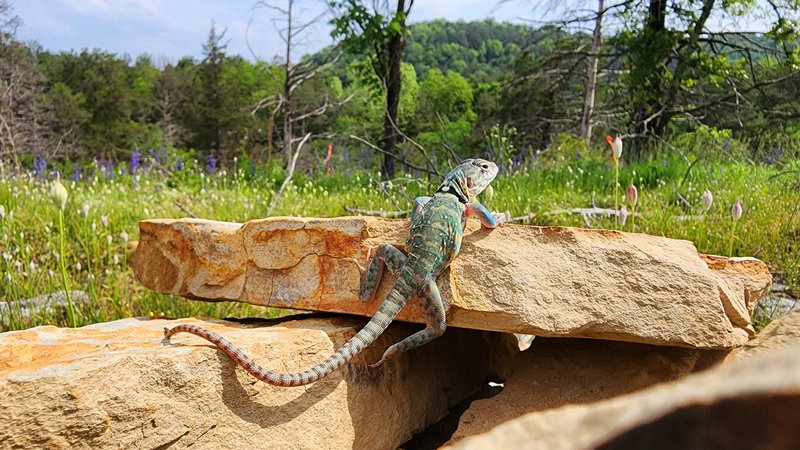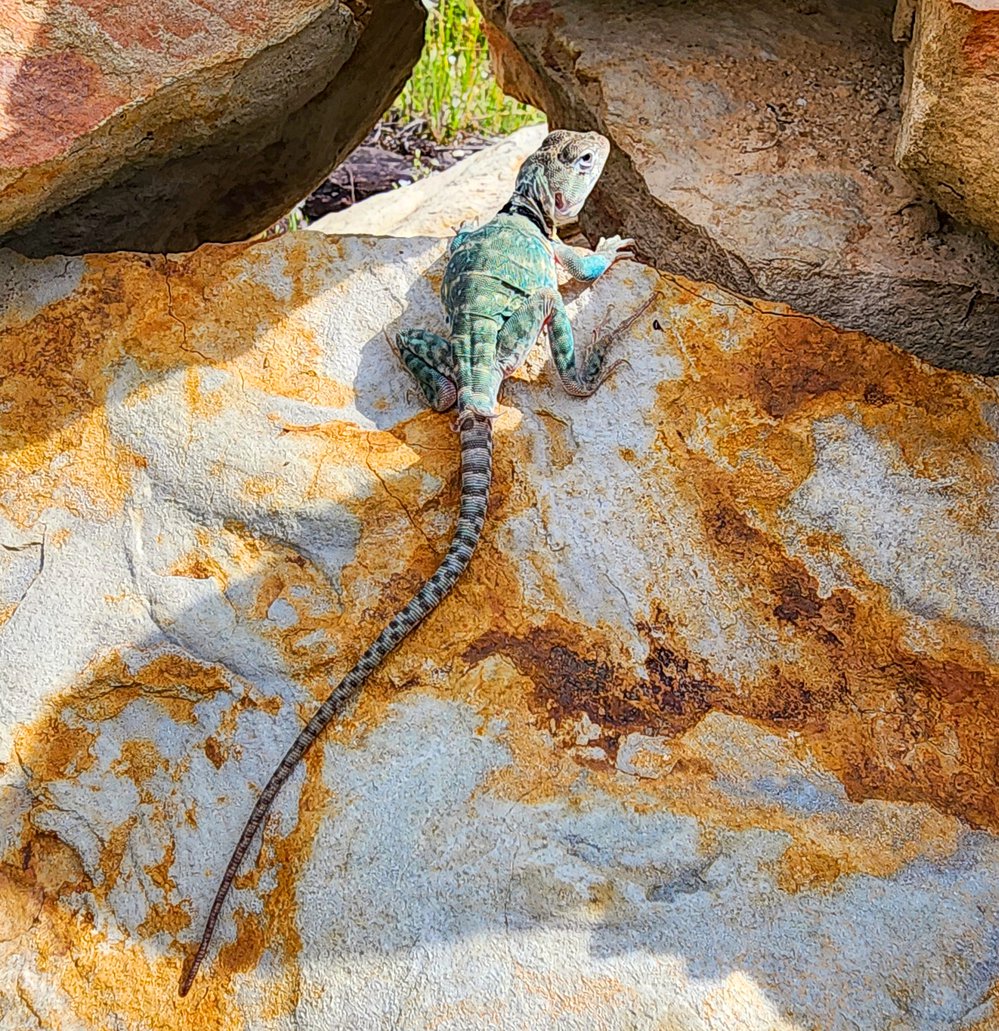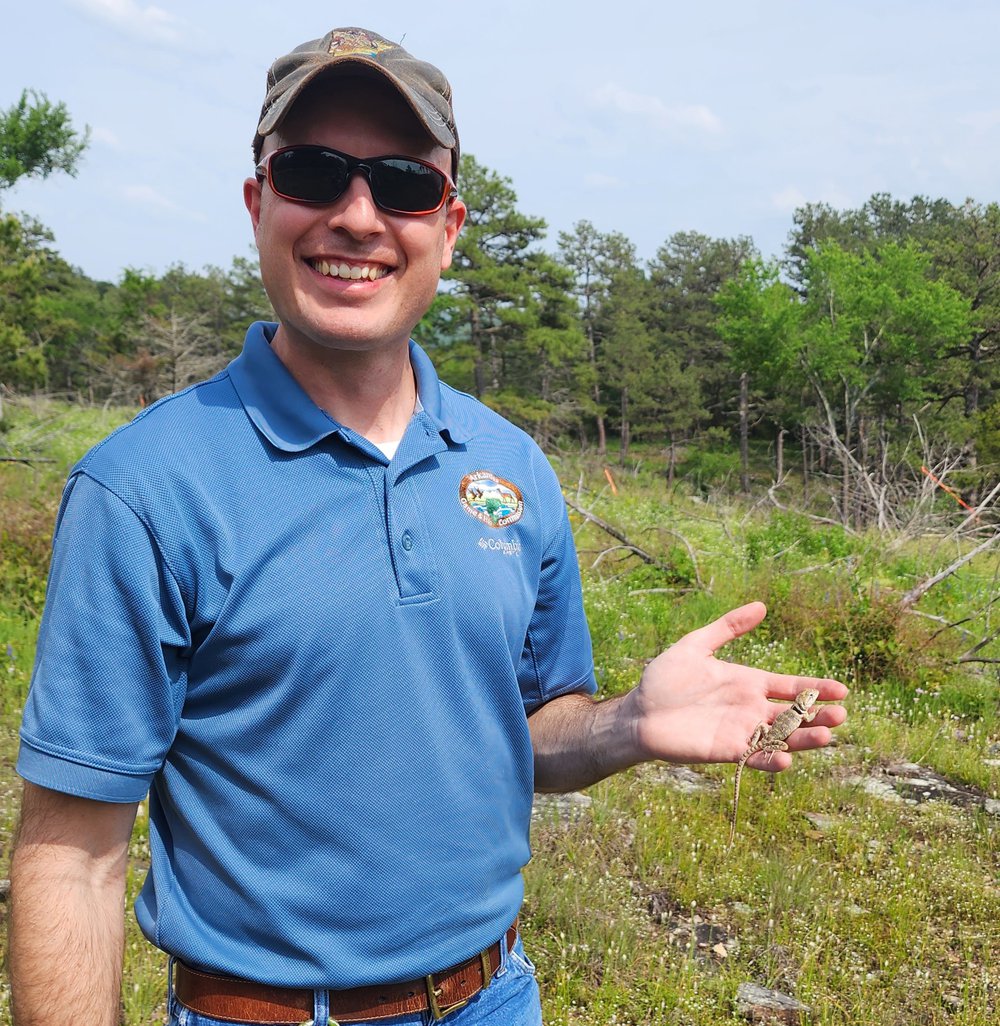Lizard team finds new homes for ‘mountain boomers’
ON 06-07-2023

June 7, 2023
Randy Zellers
Assistant Chief of Communications
LITTLE ROCK — Forty-three eastern collared lizards bred at the Little Rock Zoo found new homes in the Arkansas Ozarks last week thanks to an innovative partnership between the zoo, Arkansas Game and Fish Commission, University of Arkansas, University of Central Arkansas and the Arkansas Cooperative Fish and Wildlife Research Unit.
While not the first attempt at relocation of eastern collared lizards, which are listed as a species of greatest conservation need in Arkansas, this is the first time researchers and biologists have collaborated with the zoo to provide yearlings to introduce in newly restored habitat.
The eastern collared lizard is one of the the largest lizard species found in Arkansas. Some males may reach 14 inches long, while the females tend to be a bit smaller. Sometimes referred to as “mountain boomers,” the lizards are particularly striking with vibrant yellow, green and teal blue colors in males and females sporting more muted greens with red-orange markings. The species has experienced declines in the last few decades, primarily as a result of the loss of sparse, rocky glades. Suppression of fire along many of these thin-soiled mountain areas has allowed cedars and other woody plants to invade these spaces, changing the plant communities required by animals that historically called them home.

The Collared Lizard Conservation Team, as well as several other federal, state and private agencies have been focused on restoring glade habitat throughout the state to benefit many species, including northern bobwhite, wild turkey and several glade endemic plants, arthropods and vertebrates. Restoration efforts include prescribed fire, cedar removal, invasive plant treatments, prairie plant reseeding and the addition of large rock piles (the primary refuge for many glade species).
For the last year, the conservation partners have worked on collaborative efforts including a captive propagation program at the zoo to provide lizards for reintroductions to restored habitat sites. Last week’s release was the first of many planned for the future to re-establish this valuable Arkansas treasure to the landscape before it is too late.

The team anticipates reintroducing several more populations to other locations in the state, which will include State Parks, AGFC and private land.
Contact Dr. Casey Brewster at clbrewst@uark.edu or Dr. Matt Gifford at megifford@uca.edu for more information about the Collared Lizard Conservation Team and this effort. For more information on how to re-establish native habitat on your property, visit www.agfc.com/habitat.
CUTLINES:
Lizard climbing rocks:
Affectionately called “mountain boomers” by Ozark locals, eastern collared lizard has experienced population declines from loss of habitat. Photo courtesy Levi Horrell.
Lizard in crevice:
Last week’s introduction saw 43 yearling lizards released into prime locations for future growth. Photo courtesy of Levi Horrell.
Man with lizard:
AGFC Assistant Regional Wildlife Supervisor Levi Horrell with one of many yearling lizards released during last week’s reintroduction effort.
Recent News

Arkansas Wildlife Weekly Fishing Report
Mar. 27, 2025

AGFC Commissioner Meeting Notice
Mar. 26, 2025
Subscribe to Our Weekly Newsletter E-mails
Don’t miss another issue. Sign up now to receive the AGFC Wildlife Weekly Newsletter in your mailbox every Wednesday afternoon (Waterfowl Reports are published weekly during waterfowl season and periodically outside the season). Fishing Reports arrive on Thursdays. Fill in the following fields and hit submit. Thanks, and welcome!
